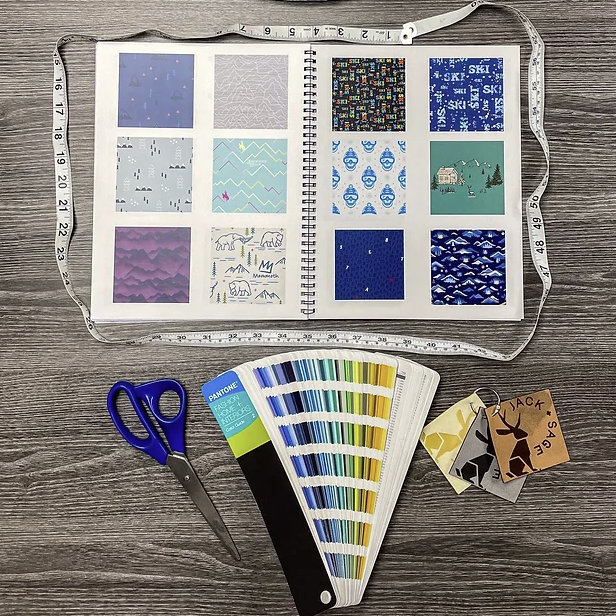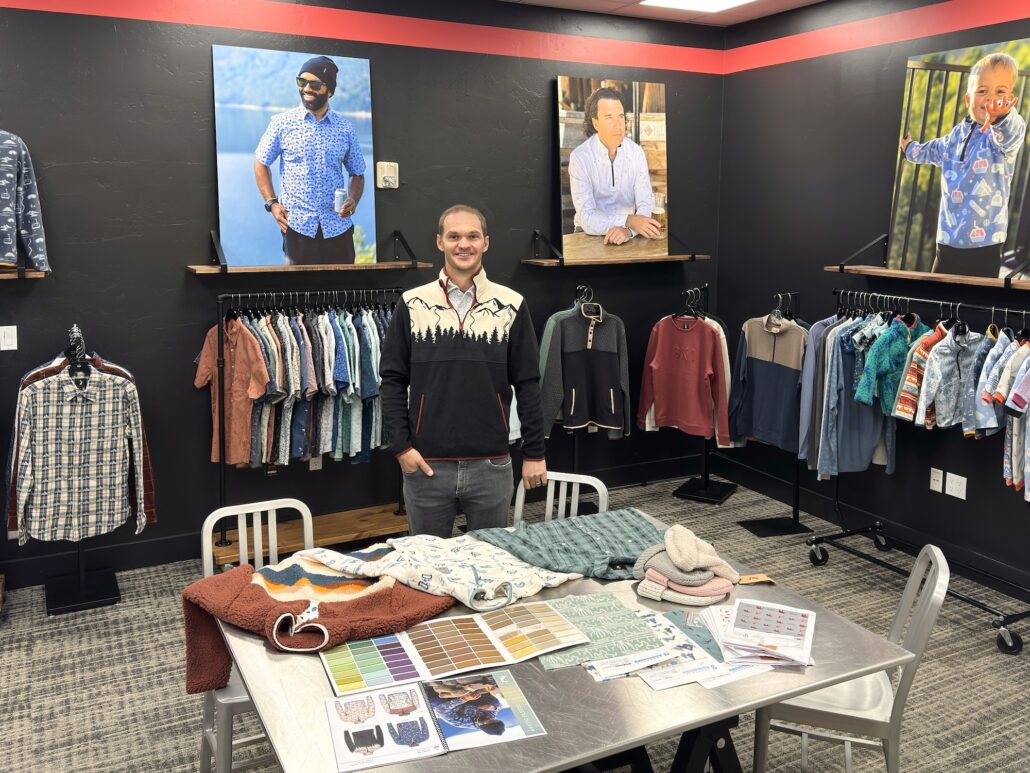What every apparel founder should steal from Jack and Sage’s playbook.
You don’t go from zero to nearly 500,000 units sold in 600 stores in under two years by luck. That kind of growth takes strategy, guts, and a bit of common sense. The kind that’s too often missing in boardrooms and branding agencies.
ApparelMagic has recently interviewed Alex Biegler, the founder of Jack and Sage, a fast-growing apparel company that’s quietly rewriting the playbook for new brands. What they pulled off in 18 months is something most founders chase for a decade.
So, what’s the secret sauce? Turns out, it’s not one big thing. It’s many small, smart moves executed well.
Let’s break them down. No fluff. No theory. Just what worked.
1. Start With Experience
Before founding Jack and Sage, Alex Biegler had already built and successfully exited his first apparel business, a custom headwear brand. That earlier venture taught him the ins and outs of the industry, from sourcing to sales, and helped him build a valuable network of contacts across manufacturing and retail.
“After my non-compete expired, we started Jack and Sage to bring elevated logo wear history,” he said. “Our brand ethos is that everyone has enough tees and hoodies, and we wanted to make something nice enough for work, dates, everyday life that could feature collaborations and other people’s brands.”
Armed with the lessons of his first company and a clear vision for a more elevated, story-driven product line, Alex was ready to build something even bigger the second time around.
“We took a lot of knowledge of the industry from the first brand and we had a lot of really strong contacts that we could leverage to help kickstart the brand with some big retailers.”
Lesson: Use your past experience, contacts and learnings to build your brand.

2. Look Different. Be Different.
From the beginning, Jack and Sage set out to avoid the crowded and saturated category of basic tees and hoodies. Alex knew the world didn’t need another plain shirt with a logo on it. Instead, he focused on creating apparel that felt more intentional and more wearable in everyday life.
“The vision was an outdoor brand with elevated prints,” Alex explained. “We wanted the prints and the actual designs on the pieces to tell the story of what people love about the outdoors and their vacations. So, when people are shopping in the store, the actual piece would speak to them.” That focus on storytelling through design, rather than just pushing a logo, became central to their appeal.
Lesson: Create products that spark instant interest and emotional connection. When your product catches someone’s eye and makes them pause, you’re already halfway to a sale.
3. Ditch the Reps and Hire Killers
Instead of relying on the industry standard approach of hiring multi-line reps who juggle several brands, Alex went a completely different route. He built an in-house sales team made up of people who had never sold a piece of clothing in their lives. That might sound like a gamble, but it was anything but. These were professionals who cut their teeth in the software world, where cold calling, data-driven reporting, and structured outreach are part of daily survival.
“Most of our sales guys come from software backgrounds. The software companies beat the hard skills into them – how to report, how to cold call, the whole ladder,” Alex explained. These weren’t fashion veterans making friendly calls. They were disciplined closers with battle-tested processes. By choosing professionalism and sales discipline over traditional industry experience, Alex turned his sales operation into a performance machine.
Lesson: Don’t hire people with fashion experience. Hire people who know how to sell.
4. Build a Sales Playbook No One Else Has
From the very beginning Jack and Sage focused on building a sales engine. Rather than relying on playbooks handed down by the industry, they created their own systems from the ground up. That meant every piece of outreach, follow-up, and conversion was designed around how their team worked, not how the industry has always done it.
Alex made it clear: “We invest in some proprietary go-to-market strategies that other brands with sales reps aren’t able to do.” That investment wasn’t just about tactics; it was about control. By having full ownership over how they approached the market, they could experiment, adapt, and optimize faster than competitors stuck in old ways of selling. In short, they weren’t just selling differently. They were playing a different game entirely.
Lesson: If your sales strategy is the same as everyone else’s, don’t expect different results.

5. Skip the Fashion Scene and Go Where Buyers Are
Jack and Sage made an intentional decision early on to avoid the traditional fashion circuit. While many young brands chase prestige at industry events like MAGIC and Collective Shows, Alex and his team focused on where the actual buying happens.
They found success at more targeted events like gift shows, college licensing expos, and logo wear showcases, where attendees were not just browsing trends but actively looking for products they could customize, co-brand, and put on shelves.
“We don’t do the fashion shows like MAGIC,” Alex explained. “Mostly logo and gift shows, like Sports Licensing & Tailgate Show, because people typically brand and collaborate on all of our pieces.” That approach let them sidestep the noise and pitch their offering directly to retailers who valued functionality, story, and collaboration over runways and spotlights. It wasn’t about looking cool. It was about making sales.
Lesson: Stop trying to look cool. Go where the money is.
6. Solve the Print Problem Others Avoid
Printing on fleece isn’t something most brands jump at. It’s technically tricky, expensive at small volumes, and full of headaches. Most companies opt for safe color blocking or simple dye techniques. But Alex saw an opportunity in that complexity. Instead of shying away, Jack and Sage leaned into the challenge and built their manufacturing process around the idea of making complex prints feasible at scale.
“We’ve taken on the challenge of procurement to do innovative and creative prints that other bigger brands aren’t interested in” Alex said. By starting with blank, uncolored fabric and printing before cutting and sewing, they gained creative flexibility that competitors weren’t willing to invest in. That willingness to go the extra step helped them create a line of products that stood out in retail and spoke directly to what outdoor and lifestyle customers were emotionally drawn to.
Lesson: Solve a production problem and you instantly stand apart.
7. Own the Finish Line
Alex made a critical choice to keep all emblem application work in-house, rather than outsourcing it to a third party like many brands do. That decision gave them complete control over how each piece was finished, and more importantly, allowed them to manage quality standards and turnaround times without relying on someone else’s timeline.
“All the emblem application, we do ourselves. It’s all under one roof. It’s a business in itself,” Alex shared. Managing that part of the operation isn’t easy, it adds logistical complexity and required more labor. At the end of the day it pays off by allowing the team to move faster and serve retailers more reliably. When the success of your product hinges on collaboration and co-branding, controlling that final step becomes a major competitive advantage.
Lesson: The more control you have over your final product, the more you control your margins, and your reputation.
8. Get the Backend Right From Day One
From the very beginning, Jack and Sage understood that scaling fast meant they needed a solid foundation. That foundation wasn’t going to be built on spreadsheets and duct-taped systems. It needed to be clean, centralized, and built for growth. That’s why they implemented ApparelMagic from day one, using it not just for inventory and order management, but also for accounting and B2B operations.
“We actually use ApparelMagic for the entire bundle. Having all the information in one system, instant reporting, true numbers has been so helpful,” Alex said. Early on, they had tried QuickBooks for their financials but found it clunky and disconnected. With ApparelMagic, everything lives in one place, making it easier to track real-time data, place smarter inventory bets, and stay on top of operations as they scaled into hundreds of retail locations. Alex called the decision to integrate operations so tightly to be one of the biggest reasons the company could grow without collapsing under its own weight.
Lesson: Build a strong, integrated backend from day one so your operations can scale smoothly as your business grows.
9. Sell Before You Buy
Jack and Sage use a smart hybrid sales model that allows them to build momentum before products even arrive. They open the season with an unlimited pre-book window, giving buyers the chance to order without constraints while gauging interest and demand. This gives the team real numbers they can use to place production orders more confidently.
“During the pre-book we sell unlimited inventory, then we put our order in and switch to inventory the rest of the year,” Alex explained. Once those pre-book orders are locked in, they shift gears and manage in-season inventory. To support this, they even had custom features built into their B2B portal so buyers can see exactly when new inventory is landing. It’s a nimble approach that keeps the cash flowing and the shelves stocked without overproducing.
Lesson: Selling before the product arrives keeps you ahead of cash flow issues and dead stock.
10. Build the Brand Even Without DTC
Jack and Sage have not yet fully leaned into direct-to-consumer sales, but that hasn’t stopped them from acting like a premium brand. From day one, they invested in brand identity, quality imagery, and a polished digital presence that reflects a seasoned company, not a scrappy startup. This approach builds confidence with wholesale buyers who want to align with products that feel established and trustworthy.
“Our wholesalers can see the brand and we feel more like a brand. It’s definitely on the growth plan when we have resources to invest in advertising and warehouse support,” Alex explained. The focus for now has been to support wholesale partners with everything they need to succeed, while planting the seeds for a future direct channel. In other words, they are setting the stage now so that when DTC is ready to go live, it will be a natural extension of a brand that already knows who it is.
Lesson: Look like a real brand and people will treat you like one, even if you’re still working out of a warehouse.
Final Thought
Alex Biegler and his team didn’t chase trends or burn cash trying to buy their way into the market. They built Jack and Sage on experience, operational discipline, and a clear understanding of what buyers actually want.
Their story is proof that when you focus on execution, solve hard problems, and make products people connect with, you don’t need to wait years to grow, you just need a plan and the nerve to follow through.
Take these lessons and apply them to your own journey. Whether you’re launching your first product or scaling into new markets, there’s a lot to learn from how Jack and Sage made every move count.















